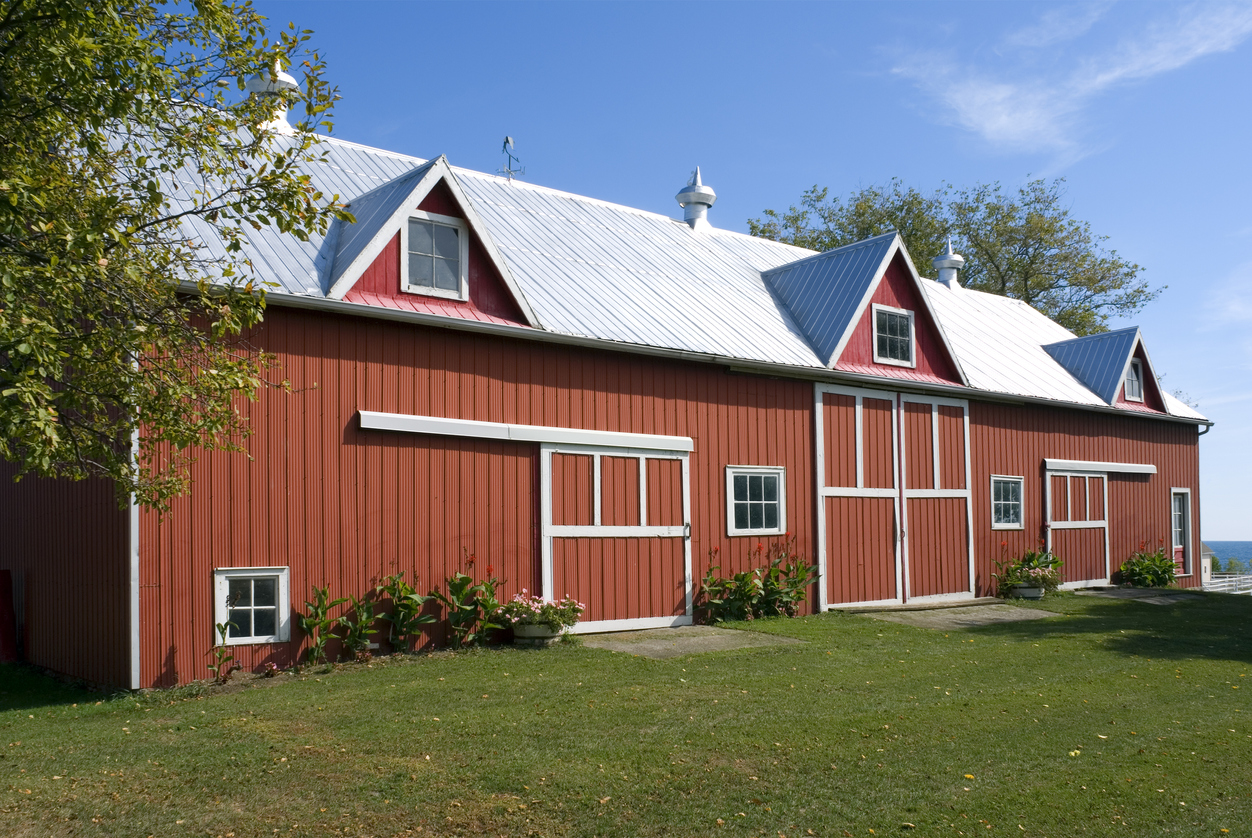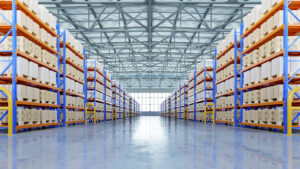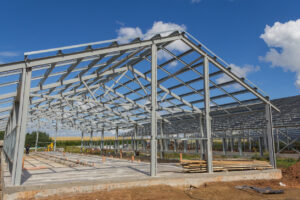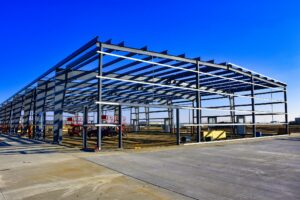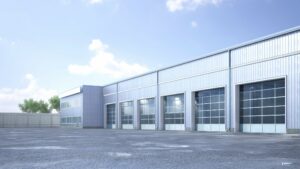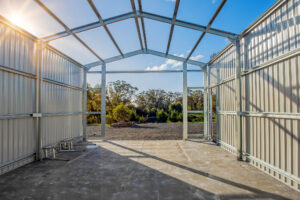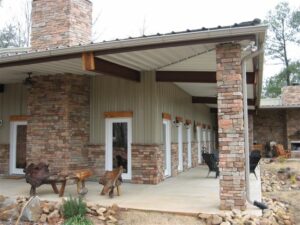Over the past few years, the self-storage industry has experienced tremendous growth as more people have come to appreciate the advantages of these facilities. This has resulted in a significant portion of households, approximately 11.1%, currently renting prefab self-storage units, which equates to an estimated 14.6 million households. (SSA Demand Study 2023)
According to the “2024 Self-Storage Almanac” published by MiniCo Insurance, the American self-storage sector is estimated to be worth $44.3 billion with around 52,301 operational storage facilities, offering an estimated 2,099,000,000 square feet of storage space.
Whether for personal use or business storage, these facilities offer a convenient solution for storing items securely.
Self-storage buildings involve various costs that must be considered. This comprehensive guide will break down the cost factors of building a self-storage facility.
Land Acquisition and Preparation
Cost of Land
The first major cost to consider when building a self-storage facility is the cost of land. The price can vary greatly depending on the land’s location, size, and zoning. It’s important to conduct a thorough market analysis to determine the best location for your facility, taking into account factors such as population density, demand for storage, and competition in the area.
Remember, land cost is not just the purchase price. You also need to factor in the costs associated with site preparation, such as clearing, grading, and soil testing. These can add significantly to the overall land acquisition cost.
Site Preparation
Once you’ve acquired the land, the next step is preparing it for construction. As mentioned earlier, this involves clearing the land, grading it for proper drainage, and installing utilities.
Depending on the condition of the land, you may also need to invest in soil stabilization or environmental remediation.
The cost of site preparation can vary widely, depending on factors such as the size and condition of the land, local labor rates, and the complexity of the work required.
It’s important to get a detailed estimate from a reputable contractor to ensure you budget accurately for this phase of the project.
Did you know?
Steel self-storage buildings, also called mini-storage buildings, are among the most popular commercial buildings erected today.
Construction Costs of Self storage
Building Materials and Labor
Construction costs are another major component of the total cost of building a self-storage facility. This includes the cost of building materials, labor, and equipment. The type of construction (single-story vs. multistory), the facility’s size, and the materials’ quality will all impact the total construction cost.
Generally, prefabricated storage units are inexpensive and preferred by many due to their sturdiness. The reason prefab self storage units are inexpensive compared to other building materials is that steel is the most recycled metal. It can be recycled repeatedly and never loses its properties for strength and durability.
Labor costs can also vary significantly depending on location and project complexity. It’s important to get multiple quotes from different contractors to ensure you’re getting a fair price.
Design and Engineering
Design and engineering costs are another important factor to consider. This includes the cost of architectural plans, structural engineering, and any necessary permits or inspections.
These costs can vary widely depending on the size and complexity of the project, and local regulations and choice of building materials.
Compared to other building materials, steel structures frequently require less intricate designs, reducing expenditures on architectural and engineering services. Using prefabricated steel components enables more standardized designs which can be erected faster than those made with traditional materials like concrete or wood.
This can lead to lower engineering costs, reduced labor and shorter project timelines.
It’s also important to factor in the cost of any necessary permits or inspections. These can vary widely depending on local regulations.
Operational Costs
Management and Staffing
Once your self-storage facility is built, there are ongoing operational costs to consider. This includes the cost of hiring and training staff, as well as ongoing management costs.
Depending on the size of your facility, you may need to hire a full-time manager and additional staff to handle customer service and maintenance.
The cost of staffing will depend on local labor rates, as well as the size and complexity of your facility. It’s important to budget for these costs and factor them into your overall business plan.
Quite a number of businesses often opt for prefab self storage units because they use durable materials that are resistant to weather and damage, potentially lowering long-term maintenance costs.
Marketing and Advertising
Marketing and advertising are crucial for attracting customers to your self-storage facility. This includes costs associated with online advertising, print advertising, signage, and promotional events.
The cost of marketing and advertising can vary widely, but it’s an essential investment for driving business to your facility.
Remember, effective marketing is not just about spending money. It’s also about targeting your advertising to the right audience and tracking the effectiveness of your campaigns to ensure you’re getting a good return on your investment.

Conclusion
Building a self-storage facility involves a range of costs, from land acquisition and site preparation to construction, operational costs, and marketing. By understanding these costs and budgeting for them accurately, you can make informed decisions that will help ensure the success of your self-storage business.
The selection of construction materials significantly influences the cost of setting up a self-storage building. It’s crucial to carefully evaluate different materials, as each has advantages and disadvantages.
For instance, steel construction could sometimes involve higher design and engineering costs due to any requested customizations with the material’s properties or specialized design requirements (doors, entryways, roof pitch, interior and exterior customizations, etc.). However, steel’s long-term benefits and efficiencies can result in cost savings.
Therefore, the key to a successful self-storage business is not just about managing costs but also about providing a high-quality service that meets your customers’ needs.
Need Assistance?
Steelco distinguishes itself in the industry by prioritizing exceptional customer service. At the heart of our customer-centric philosophy is unwavering dedication to delivering top-quality prefab self storage units and buildings.
Unlike other storage building material vendors, our steel pre-engineered metal building (PEMB) materials are drop-shipped nationwide and designed to meet the unique requirements of local buildings codes and various industries. You can learn more here and reach out.
We can also provide full design-build construction services in the Southeast U.S. Visit our new dedicated construction website for information on partnering with us for your next construction project. We offer comprehensive design/build and general contracting services across Industrial, IOS, Self-Storage, Manufacturing, and Retail sectors.
————
Frequently Asked Questions
How much does it cost to build a self storage?
The selection of construction materials is crucial in determining the cost of establishing a self-storage building. Other elements, such as location, size, and specific features, also impact the overall cost. On average, self-storage facilities have a starting price of around $17 per square foot. However, this cost may increase depending on customizations (doors, windows, roof pitch, building modifications, etc.) and the availability of supplies.
Is self storage still a good investment?
Self-storage continues to be a promising investment opportunity, supported by the growth projections discussed earlier. It is growing steadily at a compound annual growth rate (CAGR) of 4.37%.









